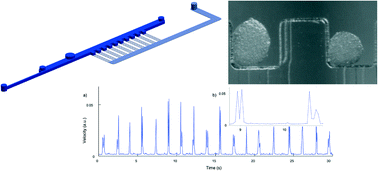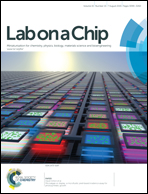Stem cell derived in vivo-like human cardiac bodies in a microfluidic device for toxicity testing by beating frequency imaging†
Abstract
Beating in vivo-like human cardiac bodies (CBs) were used in a microfluidic device for testing cardiotoxicity. The CBs, cardiomyocyte cell clusters derived from induced pluripotent stem cells, exhibited typical structural and functional properties of the native human myocardium. The CBs were captured in niches along a perfusion channel in the device. Video imaging was utilized for automatic monitoring of the beating frequency of each individual CB. The device allowed assessment of cardiotoxic effects of drug substances doxorubicin, verapamil and quinidine on the 3D clustered cardiomyocytes. Beating frequency data recorded over a period of 6 hours are presented and compared to literature data. The results indicate that this microfluidic setup with imaging of CB characteristics provides a new opportunity for label-free, non-invasive investigation of toxic effects in a 3D microenvironment.


 Please wait while we load your content...
Please wait while we load your content...